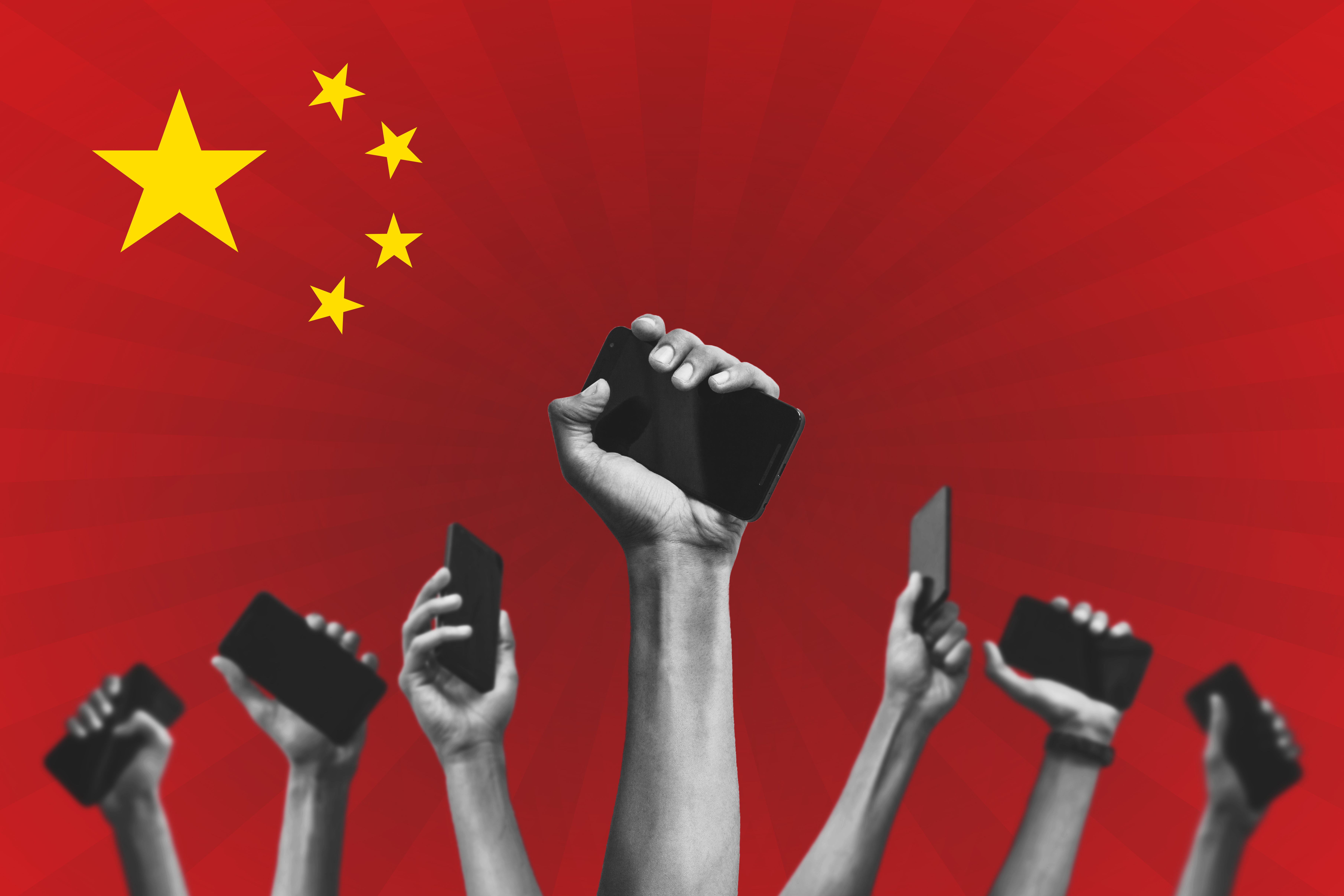Is Chinese thought work coming to America?

“I know this one pusher walks around humming a tune and everybody he passes takes it up. He is so grey and spectral and anonymous they don’t see him and think it is their own mind humming the tune.”
—William Burroughs, Naked Lunch
It’s 2017. Ten thousand protesters assemble in Taipei to demand the Taiwanese government lift its ban on the ritual burning of “ghost money” in Taoist temples. A third of Taiwan’s population identifies as Taoist. Clearly, this is textbook government overreach, callous interference with a sacred custom. Yet no matter how compelling the cause of these protesters, Taiwan’s Tsai administration is powerless to meet their demands.
Because there is no ban.
It’s fake news.
Fake news based on a supposed Taiwanese government document — written in simplified Chinese characters. (Taiwan, like Hong Kong, uses traditional characters, while simplified characters are used in mainland China.)
The 2016 election has made the American electorate painfully familiar with this kind of disinformation campaign. Russian hackers, bots, and troll farms have worked mightily to tip democratic debate toward a “post-truth” dystopia that feels just around the corner if not already here. The age-old Soviet disinformation campaigns that spread rumors over radio and through newspapers in a bygone era (like Operation Infektion, which claimed that HIV/AIDS was created by the U.S. government’s experimentation with biological weapons) are now being mainlined over social media platforms. But Russia may not be the only star player in the disinformation game anymore — China has increasing capacity to impact this domain according to a recent report put out by RAND, a data-focused U.S. global policy think tank (listen to this Sinica Podcast for more on RAND).
The ghost money incident in Taiwan, Russia spreading misinformation through fake American Facebook groups like “Stop All Immigrants” or “Blacktivist” — RAND refers to these kinds of activities as hostile social manipulation: the use of information to manipulate the political, social, and economic conditions in a target country to gain a competitive advantage. While there is abundant evidence that Russia engages in hostile social manipulation over Western social media, until recently, there had been limited unclassified evidence of China doing the same. Using Weibo and WeChat to target Taiwan was fair game, but your grandmother was unlikely to post a link in your Facebook newsfeed that had been originally cooked up in the basement of some government building in Beijing. But when Facebook, Twitter, and YouTube all reported this August that they had shut down accounts spreading disinformation that favored the CCP’s position over the now months-long Hong Kong protests, that Rubicon had been crossed in plain sight.
China sees the benefits of Russian disinformation
It wasn’t long ago that a concerted Chinese disinformation campaign against a Western target seemed rather unlikely. In fact, it took some time for the Chinese military intelligentsia to warm to Russia’s attack on the 2016 U.S. presidential election. The military’s initial analysis emphasized the potential consequences Russia could face when caught. These consequences have largely failed to materialize, leading more recent assessments in the Chinese military journal Military Correspondent to turn positive. Whether this along with a trade war and other grinding geostrategic forces sets the stage for a Chinese disinformation campaign in 2020 is the $64,000 question. However, the intellectual roots of a new form of informational contest with Western powers goes back much further than 2016.
The People’s Liberation Army (PLA) sees the current incarnation of public opinion warfare as being pioneered by the U.S. military. The PLA viewed the U.S. military as having successfully shaped public and elite opinion of the 2003 invasion of Iraq through the use of mass media. More recently, the Arab Spring brought back frightening memories of the fall of the Soviet Union and fueled renewed CCP concern of a zero-sum ideological competition with the West.
With this in mind, the Chinese have watched the Russians closely. In the Ukraine, they have seen how important it was to initiate information operations before unleashing kinetic gray war tactics. They have seen the effectiveness of RT (Russia’s international television network) serving, as it was put in China Military Online (in Chinese), as Russia’s “propaganda aircraft carrier” — a kind of great propaganda mothership by which sorties of Russian interference launch. As China watches Russia successfully utilize and innovate its informational warfare machine, it becomes less and less likely that China will sit on the sidelines.
Thought work comes to America
While Chinese political propaganda efforts in past U.S. elections have largely been relegated to paid inserts in newspapers, China has a great deal of latent capacity should the CCP choose to use it. China’s Great Firewall and accompanying censorial and opinion-control tactics have elevated China to world leadership in limiting internet freedom through widespread content blocking, content removal, and content fabrication. In building domestic censorship and propaganda capability, the Chinese government has built up immensely powerful tools and know-how that lay at the ready if and when it decides to interfere in a U.S. election. We’ll likely get a sneak-peek preview of these tools at work in January when the Taiwanese hold their 2020 presidential election.
According to RAND, “Propaganda work is executed across all three major organs of Chinese governance: the CCP, the state apparatus [including state-owned enterprises], and the military.” Coordination does occur between these entities, but various units frequently operate without a centralized plan. This is unsurprising given the vast numbers of distinct organizations at all levels of government engaged in information work, known in China as “thought work” (思想工作 sīxiǎng gōngzuò). To give an idea of the scale of this operation, in a recent study in the American Political Science Review, a single sub-district of the city of Ganzhou was found to have over 200 organizations involved in thought work. Perhaps the most chaotically distributed tool at the CCP’s disposal is the so-called Fifty-Cent Party, or “fifty-centers.” These are people paid or otherwise induced to flood social media with pro-government sentiments. They are called the Fifty-Cent Party (五毛党 wǔ máo dǎng) because some are allegedly paid 0.5 yuan (about $0.07) per internet post that supports a desired narrative.
While the fifty-centers form the amorphous ground floor, the penthouse of Chinese propaganda is the CCP’s Publicity Department and the United Front Work Department. The Publicity Department is domestically focused, while the United Front Work Department attempts to gain support for CCP policies both at home and abroad. In particular, the over 60 million members of the Chinese diaspora are frequent targets. RAND argues that this group is seen by the CCP as an effective vector to spread global influence. For this reason, China places a high priority on controlling or influencing global Chinese-language media, a fact borne out by an estimated $10 billion a year in Chinese foreign propaganda spending. With Alibaba’s $260 million acquisition of the South China Morning Post in 2015, even a prominent English-language media platform targeting ethnically Chinese audiences is subject to Beijing’s influence. And while there is no open-source evidence of Chinese government involvement, reports have indicated that WeChat, a Chinese-hosted messaging/social media platform, effectively impacted Chinese-American votes in the 2016 U.S. election. With an estimated 100 million users outside of China, a future influence campaign conducted over WeChat could have far-reaching implications.
If China does intend to throw its hat into the ring of the many foreign groups eyeing the 2020 U.S. election, it has clearly laid ample groundwork. Between the trade war and the potential for congressional legislation punishing China for its actions in Hong Kong, there may be more than enough reason for China to take the plunge. Or maybe it will go a little slower, follow the advice of Dèng Xiǎopíng 邓小平and “cross the river by feeling the stones,” and wait until 2024 or 2028, when perhaps AI and deepfakes and the whole bag of future thought work dirty tricks are so good, we’ll all have given up on even trying to separate thought from thought work.
So hum whatever tune you like. Who knows how they get stuck in your head or why. Just don’t burn any ghost money. I hear that’s illegal now.





